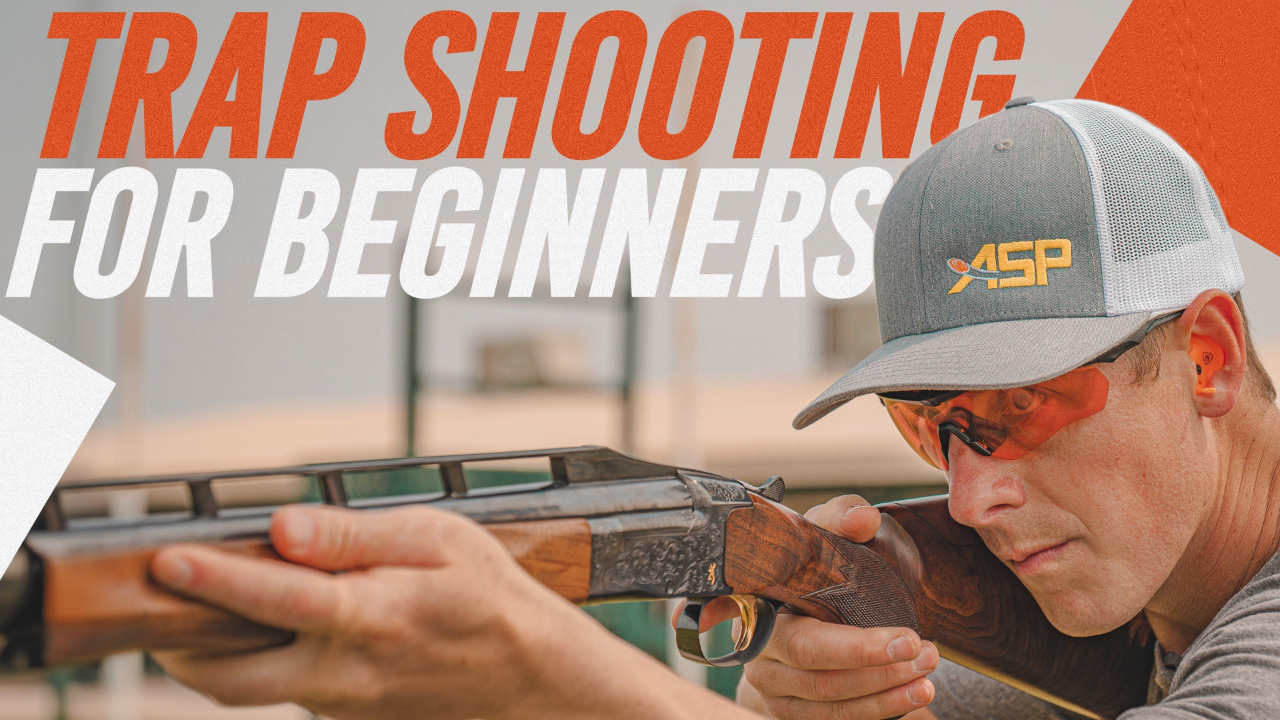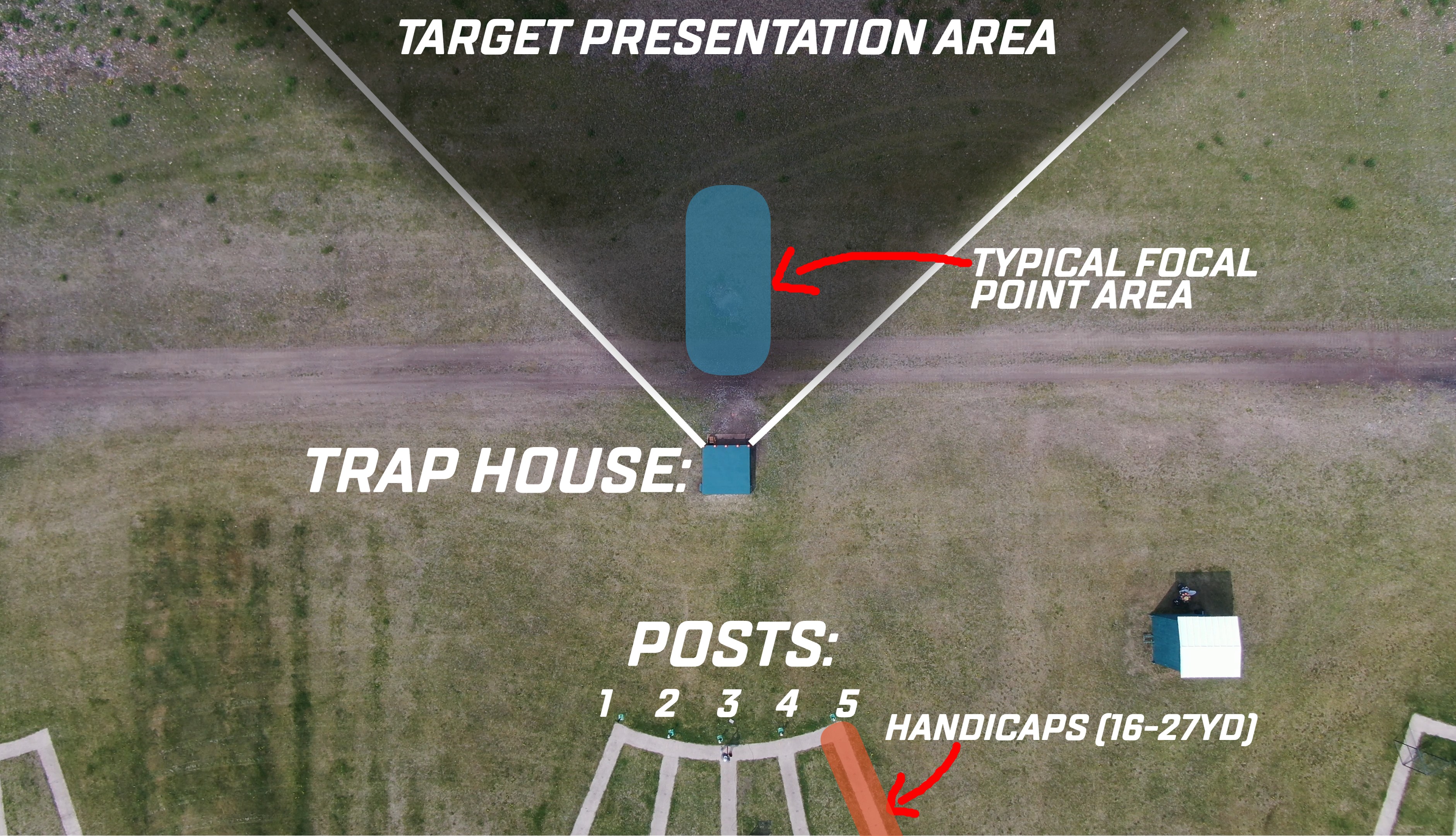Trap Shooting for Beginners | Rules, Tips, & Techniques
Jun 01, 2023
Trap shooting can be an intimidating sport at the beginning. Walking up to the line, not knowing the process and procedures and having a fear of judgment are normal experiences for new shooters but they don't have to be. When you understand the rules and basic concepts, it's really a fun and simple game that can be enjoyed by many. In this video/post, we go over the rules, tips, and techniques so you can get out and shoot trap with confidence. Share your trap shooting experience with us on the TFL COMMUNITY! Let's go!
What is Trap Shooting?
- Trap shooting is a thrilling and challenging sport that combines precision, focus, and timing. Whether you're an experienced shooter or a novice looking to learn a new skill, trap shooting offers an exciting avenue for recreation and competition.
-
In trap shooting, participants stand in stations (posts) positioned in a crescent shape behind the trap house. The trap house, located in front of the posts, is equipped with a mechanical trap that throws clay targets into the air.
-
Each shooter takes turns shooting until everyone has fired 5 rounds at their post. Then the shooters rotate to the next post and repeat until they have shot 5 rounds at all 5 posts for a total of 25 shots. The posts are all the same distance from each other and the trap house in front of you, but each post (1-5) has its own challenges as they are all placed at a different angle in relation to the trap house. The targets are launched when the shooter directs them to be launched by saying "Pull," "Pull It," or some other loud noise.
- There are 3 main disciplines of trap shooting: Singles, Doubles, or Handicap. Singles mean you will shoot at one clay at a time per turn from the 16-yard line. With Doubles, just like the name implies two clays will be thrown at the same time. Doubles are also shot from the 16-yard line. Handicap is the same as singles, except you shooters move back further from the trap house based on their handicap. The better your average score, the further back you will shoot from. Trap field posts range from 16 to 27 yards.
Origins of Trap Shooting?
-
Trap shooting has a rich history that dates back to the late 18th century. The sport originated in England as a means of practicing bird hunting and honing shooting skills. In the early days of trap shooting, shooters would shoot at live pigeons released from...you guessed it: Released from traps.
-
Live pigeon shooting faced growing criticism - as a result, artificial targets were introduced in the mid-19th century to replace live birds and through a series of evolutions, the "clay pigeon" was developed. Now you know why they are called clay pigeons.
-
The development of a spring-loaded throwing device in the 1860s revolutionized the sport, as it allowed for consistent and controlled launching of clay targets. The name "trap" has remained, coining the title of this sport.
What Equipment Do I Need?
- Shotgun - As you advance, you may want to get a dedicated trap shogun, but to get started, most 12ga or 20ga will get you started. Some trap clubs (Like Alexandria Shooting Park) will even have loaner shotguns for you to use.
- Ammo - Most of the time, you will also be able to purchase ammo from the range if necessary.
- Eye and Ear Pro - Ear pro, eye pro, and closed-toe shoes are essentials. Most clubs will have belt shell carriers available. This is essential so you're not carrying around a box of shells and reaching down to grab them. This is a safety thing. A pouch is very handy for keeping your empty shells consolidated as well.
- Trap shooting is often done as a social sport. There are five stations in trap, so joining a league or team is a fun way to shoot. You can have more than or less than 5 people, but typically 5 will shoot at a time.
The Process
- Let's start from the beginning. Now that you have a gun, you must follow basic gun safety and etiquette. Always move about with the gun unloaded and open.
- With your gun open and safety gear on, you will walk up with your squad and start from one of the 5 posts. SIDE NOTE: In this example, we're singles trap and will be at the default 16-yard line.
- Let's assume you are at starting at station one. The individual that stands at post one will always be the one to initiate a round. The first thing you'll want to do is say "Squad ready" to make sure your team is good to go. Then you will address the scorekeeper with a "Scorer ready" to make sure their god to go. Next, you'll say, "Let's see one" This is done so that the squad has an opportunity to see a clay and how it flies. The way in which the clays are thrown should fall into certain specifications, but we won't dive into the now. "Seeing one" gives the squad an opportunity to protest how the clays are being thrown and to verify that the throw is within standards.
- Once everyone is ready, the first shooter at post one will load their gun, mount and call "pull" to initiate the throwing of a clay. You take a shot, and break it! Good job! Now the shooters at stations 2,3,4, and 5 will take their first shots. This pattern continues until each shooter has shot a total of 5 shots from the post they started on. Keep in mind that your gun should not be chambered with a round until it is your turn to shoot.
- Once everyone has shot 5 times, the squad will rotate. You'll move from station 1 to 2, the shooter at station 2 will go to 3, so on and so forth. The person at post 5 will move to station 1. Because this distance of travel is longer than the other stations, there is etiquette to be followed. Rotate your body to the right and walk behind the rest of your squad. Safety is very important on the trap field so keep all of this in mind. Make sure your gun is empty, clear, and open. If you have a break action, keep it open and walk with it open. If you have a semi-auto, walk with it barrel up and locked open.
- Once the rotation is done, the same process is executed with rotations after everyone has shot once at their station. This continues until everyone has shot a total of 25 shots.
Tips and Techniques
- Diving into the technicalities of trap shooting is a completely different conversation, but here are a few things to be mindful of.
- Hold points and focal points: As you can imagine, a hold point is where you're holding your gun before you shoot, and focal points are where your eyes are. To no surprise, your eyes WILL NOT be on your bead, but out in front of the trap house, ready to pick up the target!
- It is common to put your eyes 5-10 yards or so in front of the trap house so that you can pick up on where the clay is going quicker. If your eyes are on the gun or the trap house, you're eyes will have to move out to get focused on the target and you will have less time to react to that clay.
- Hold points are about getting your gun in a position relative to the trap house to minimize as much gun movement as possible. We'd recommend that if you're at post one, line up your gun with the left corner of the house about 1-2 feet above that corner. Change your hold points relative to which post you are at. If you're at post 2, put your gun 1-2 feet above the trap house and split the difference between the center of the house and the left corner. Post 3, but is perfectly centered with the house. Continue this pattern as you move through the posts. This is an oversimplified explanation, but you will adapt and learn more as you gain experience.
- Another very important and often overlooked discussion is that of foot placement. This may change depending on what post you're at as well. If you're at post one and are standing with your feet squared away from the trap house, If you get a hard left target, your hips won't allow you to move toward the clay effectively. Open up your stance to allow you to swing to the hard left and hard right birds without resistance from your hips. Be conscious of this on every station, as you have a unique perspective of the clay on every post.

That's the gist of it folks! There are many details we could go into, but for starters, this should be an adequate amount of information to get you walking up to the trap field with confidence! Whether our targets in the field or our targets in life, we will only hit what we are focused on, so live the #targetfocusedlife
Stay Target Focused,
Steve










